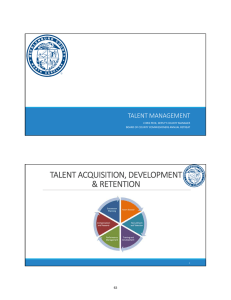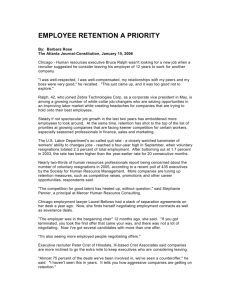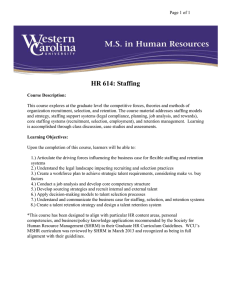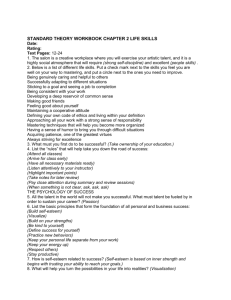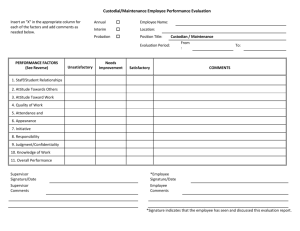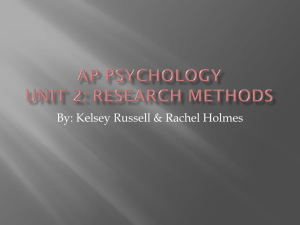"A" or "C" Student
advertisement
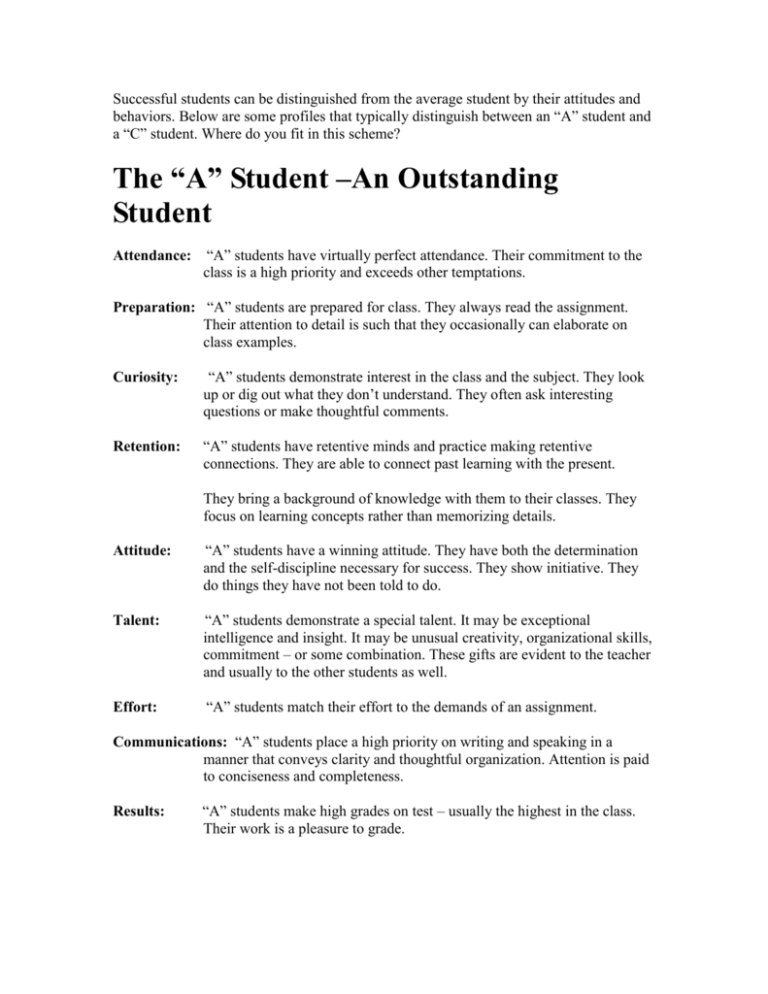
Successful students can be distinguished from the average student by their attitudes and behaviors. Below are some profiles that typically distinguish between an “A” student and a “C” student. Where do you fit in this scheme? The “A” Student –An Outstanding Student Attendance: “A” students have virtually perfect attendance. Their commitment to the class is a high priority and exceeds other temptations. Preparation: “A” students are prepared for class. They always read the assignment. Their attention to detail is such that they occasionally can elaborate on class examples. Curiosity: “A” students demonstrate interest in the class and the subject. They look up or dig out what they don’t understand. They often ask interesting questions or make thoughtful comments. Retention: “A” students have retentive minds and practice making retentive connections. They are able to connect past learning with the present. They bring a background of knowledge with them to their classes. They focus on learning concepts rather than memorizing details. Attitude: “A” students have a winning attitude. They have both the determination and the self-discipline necessary for success. They show initiative. They do things they have not been told to do. Talent: “A” students demonstrate a special talent. It may be exceptional intelligence and insight. It may be unusual creativity, organizational skills, commitment – or some combination. These gifts are evident to the teacher and usually to the other students as well. Effort: “A” students match their effort to the demands of an assignment. Communications: “A” students place a high priority on writing and speaking in a manner that conveys clarity and thoughtful organization. Attention is paid to conciseness and completeness. Results: “A” students make high grades on test – usually the highest in the class. Their work is a pleasure to grade. The “C” Student – An Average Student Attendance: “C” students are often late and miss class frequently. They put other priorities ahead of academic work. In some cases, their health or constant fatigue renders them physically unable to keep up with the demands of high-level performance. Preparation: “C” students may prepare their assignments consistently, but often in a perfunctory manner. Their work may be sloppy or careless. At times, it is incomplete or late. Curiosity: “C” students seldom explore topics deeper than their face value. They lack vision and bypass interconnectedness of concepts. Immediate relevancy is often their singular test for involvement. Retention: “C” students retain less information and for shorter periods. Less effort seems to go toward organizing and associating learned information with previously acquired knowledge. They display short-term retention by relying on cramming sessions that focus on details, not concepts. Attitude: “C” students are not visibly committed to class. They participate without enthusiasm. Their body language often expresses boredom. Talent: “C” students vary enormously in talent. Some have exceptional ability but show undeniable signs of poor self-management for bad attitudes. Others are diligent but simply average in academic ability. Effort: “C” students are capable of sufficient effort, but either fail to realistically evaluate the effort needed to accomplish a task successfully, or lack the desire to meet the challenge. Communication: “C” students communicate in ways that often limit comprehension or risk misinterpretation. Ideas are not well formulated before they are expressed. Poor listening/reading habits inhibit matching inquiry and response. Results: “C” Students obtain mediocre or inconsistent results on test. They have some concept of what is going on but clearly have not mastered the material. Source: The teaching Professor. Paraphrased from John H. Williams, Clarifying Grade expectations, August/September, 1993 and Paul Solomon and Annette Nellon, Communicating About the Behavioral Dimensions of Grades, February, 1996.


